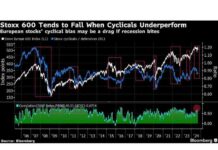Mexico’s central bank recently made the decision to restart its easing cycle, signaling a potential preference for further monetary policy easing in the future. This move comes amidst a focus on slowing economic growth and core inflation rather than currency volatility. As a result, experts have adjusted their forecast for Banxico policy rates, projecting a lower rate going forward. With this clarity in monetary policy direction, financial markets are now turning their attention to political factors that could impact the Mexican economy.
Debates surrounding constitutional amendments and fiscal policy are expected to take center stage in Mexico in the upcoming weeks, coinciding with the looming U.S. presidential election. Political developments pose key risks to the optimistic long-term outlook for the Mexican peso. However, experts remain hopeful that worst-case scenarios can be avoided, and they continue to believe in the potential for the Mexican peso to recover in the long run.
Easing Policy and Economic Concerns
Banxico’s decision to resume its rate cutting cycle was met with mixed expectations from both markets and economists. In a close 3-2 split vote, policymakers chose to lower the overnight rate by 25 basis points to 10.75%. The official statement emphasized policymakers’ focus on slowing economic growth in Mexico, which has shown signs of deceleration throughout the year. This, coupled with a slowdown in the U.S. economy, has put pressure on growth prospects in Mexico. Additionally, policymakers noted that while headline inflation risks remain tilted to the upside, core inflation is sufficiently contained to warrant further monetary policy easing. Surprisingly, Banxico’s statement barely addressed Mexican peso depreciation and volatility, nor did it mention concerns about political risks, both domestic and external.
Interpreting Banxico’s Forward Guidance
Analyzing Banxico’s forward guidance, experts interpret the central bank’s stance as indicating more rate cuts in the future. However, there is a sense of caution in approaching monetary policy decisions. Despite expectations of back-to-back 50 basis points rate cuts by the Federal Reserve starting in September, Banxico is anticipated to continue with 25 basis points cuts at each meeting until the end of the year. This revised outlook forecasts Mexico’s policy rate to reach 10.00% by the end of the year, with further easing expected in 2025, projecting a year-end policy rate of 8.00%. Risks to this forecast lean towards more aggressive easing if the Fed follows through with its rate cut plans or if Mexico’s economy decelerates faster than anticipated.
Understanding Fast Market Risks
In light of recent high volatility in the stock market, investors are urged to exercise caution when participating in fast-moving markets. While Wells Fargo Investments, LLC does not impose restrictions on trading fast-moving securities, it is essential to be aware of the additional risks associated with such markets. Understanding the potential challenges can help investors make informed decisions to mitigate risks.
Higher Margin Maintenance Requirements
The wide swings in intra-day trading have led to increased margin maintenance requirements for certain stocks, particularly in sectors like Internet, e-commerce, and high-tech. Due to their high volatility, these stocks now have initial and maintenance requirements of up to 70%. It is crucial for investors to be aware of these requirements, as failure to meet them could result in margin maintenance calls on their accounts.
Navigating Fast Markets
Fast markets are characterized by heavy trading and highly volatile prices, often driven by an imbalance of trade orders. Various events can trigger fast markets, such as IPOs, company announcements, or analyst recommendations. In fast market conditions, trade executions may be delayed, and price quotes may not accurately reflect real-time market conditions. Investors should be prepared for potential delays and fluctuations in execution prices when trading in fast markets.
Managing Large Orders
Large orders in fast markets may be filled in smaller blocks, leading to unexpected execution prices. It is important for investors to understand that orders are executed on a first-come, first-serve basis, and the execution price may vary based on market conditions. Utilizing limit orders can help mitigate the risks associated with large orders in fast markets by setting a maximum price for buying or selling securities.
Utilizing Limit Orders and Stop Orders
Limit orders can help investors set a specific price at which they are willing to buy or sell securities, reducing the risk of unexpected execution prices. Stop orders, on the other hand, become market orders once the security trades through a designated stop price. Investors can also consider utilizing stop limit orders, which combine the features of stop and limit orders to provide more control over execution prices in fast markets.
Maintaining Compliance and Risk Management
In fast markets, it is crucial for investors to adhere to trading regulations and risk management practices to avoid potential penalties or losses. Freeriding, which involves using proceeds from the sale of a security to fund the purchase of the same security on the same trading day, is prohibited and can result in account freezes. Investors should also be familiar with different order types, such as All or None, Day Order, Fill or Kill, Good Til Canceled, and Immediate or Cancel, to effectively manage their trades in fast markets.
Navigating Volatile Markets
During times of high market volatility, delays in online trading platforms and longer wait times for phone agents may occur. Investors should be prepared for potential challenges in accessing their accounts and executing trades during volatile market conditions. Understanding the impact of fast markets on trade execution and account access can help investors make informed decisions and mitigate risks associated with market volatility.
Conclusion
As Mexico’s central bank adjusts its monetary policy to address economic challenges, investors must also be mindful of the risks associated with fast-moving markets. By understanding the implications of fast market conditions, implementing risk management strategies, and utilizing different order types effectively, investors can navigate volatile markets with greater confidence. Staying informed about market developments, regulatory requirements, and potential risks can help investors make informed decisions and protect their investments in fast-paced trading environments.






















